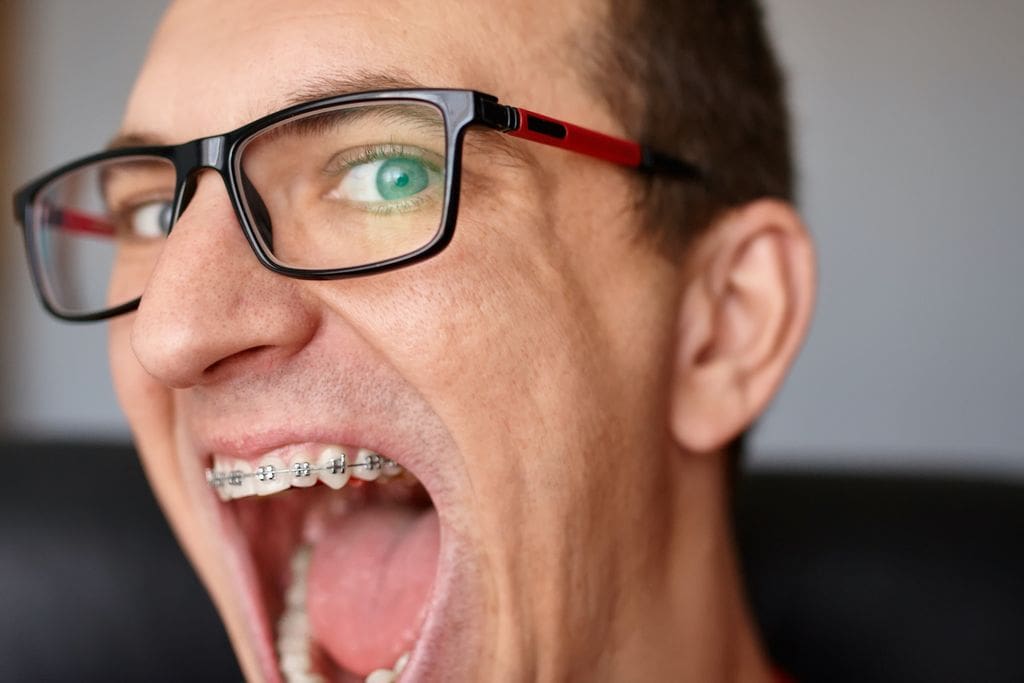Maintaining good oral hygiene is always important. However, it becomes even more crucial when you have braces. Braces can make cleaning your teeth a bit harder. You can keep your mouth healthy and teeth clean with the right techniques and tools.
Caring for your teeth and braces requires a little extra time and effort. Yet, it’s worth it for a healthy smile. With good oral hygiene habits, you’ll be on your way to a beautiful, healthy smile once your braces come off. Maintaining good oral hygiene will make you a good candidate for many of our orthodontic services.

Why Oral Hygiene is Important with Braces
When you have braces, food particles and plaque can easily get trapped around the brackets and wires. If not cleaned properly, this can lead to several problems, including:
- Cavities: Plaque buildup can lead to tooth decay, causing cavities to form around the brackets.
- Gum Disease: Poor oral hygiene can cause gums to become inflamed and infected, leading to gum disease.
- White Spots: These are early signs of tooth decay that can appear around the brackets and remain even after we remove your braces.
- Bad Breath: Food particles trapped in the braces can cause bad breath if not cleaned properly.
So, how do you keep your mouth healthy with braces? You need to take several steps daily to avoid these dental health issues.
Brushing with Braces
Just like teeth without braces, you must brush your teeth daily. However, the brackets and wires can get in the way. This is why brushing your teeth with braces requires a little more effort.
To begin with, you need to choose the right toothbrush. When brushing your teeth, use a soft-bristled toothbrush or a special toothbrush to clean around braces. You should also brush after each meal. This will help prevent food and plaque buildup. If you can’t brush right away, rinse your mouth with water until you can.
Hold your toothbrush at a 45-degree angle to the gums and use small circular motions when brushing. Make sure to brush above and below the brackets, as well as on the chewing surfaces and the inside of your teeth.
Flossing with Braces
Flossing is a critical habit for anyone with teeth and gums. While flossing with braces can be tricky, it is vital to get rid of plaque and food particles between teeth. It can also remove plaque buildup near the brackets of your braces.
A floss threader is a handy tool that helps you thread the floss under the wires of your braces. It’s like a needle that guides the floss where it needs to go. You should also use waxed floss, which is less likely to get caught on your braces. Make it a habit to floss at least once daily, preferably before bedtime. This ensures your teeth are clean overnight.
Carefully thread the floss under the wire and between your teeth when you floss. Gently move it up and down the sides of each tooth to remove plaque and food particles.
Additional Cleaning Tools
In addition to brushing and flossing, other tools can help you keep your teeth and braces clean.
Interdental Brushes: These small brushes can fit between your braces and teeth to help remove food particles and plaque. They are especially useful for cleaning around brackets and wires.
Water Flossers: These devices remove food particles and plaque between your teeth and your braces. They are very effective and can greatly improve your oral hygiene routine.
Mouthwash: An antimicrobial or fluoride mouthwash can help reduce plaque and keep your mouth fresh. Rinse with mouthwash after brushing and flossing.
Orthodontic Wax: If your braces are irritating your cheeks or gums, you can apply orthodontic wax to the brackets or wires to reduce discomfort.
